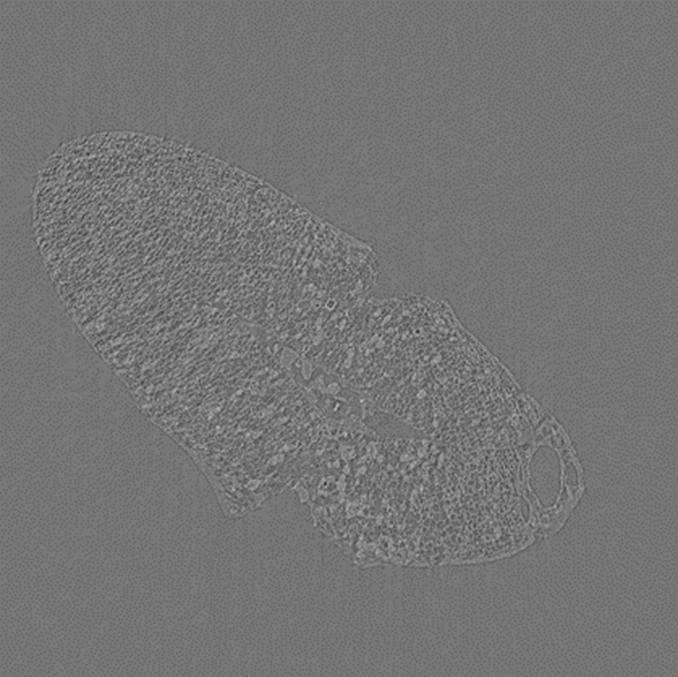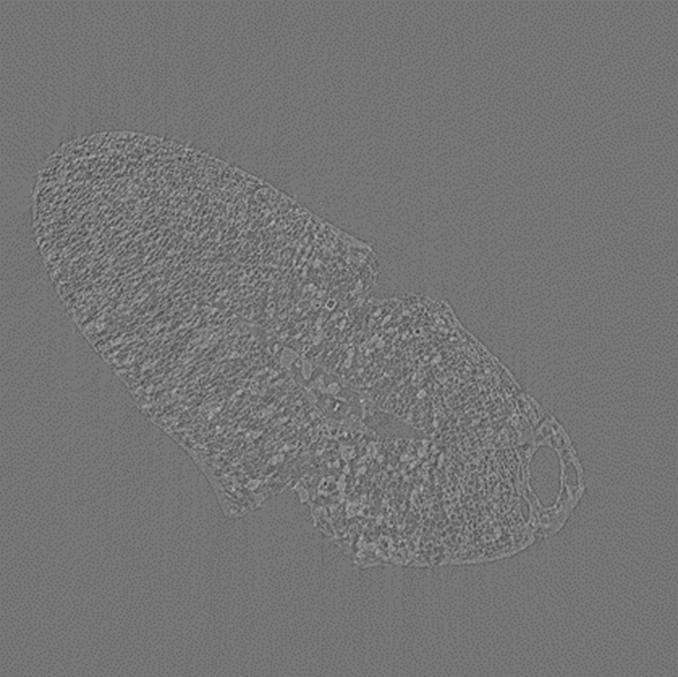
Credit: Diamond Light Source
Scientists from UCL have used the UK's synchrotron facility, Diamond Light Source, to document for the first time the rate of evolution of seed coat thinning, a major marker of crop domestication, from archaeological remains.
Writing in the journal Scientific Reports, the authors present evidence for seed coat thinning between 2,000 BC and 1,200 BC in the legume horsegram (Macrotyloma uniflorum), a bean commonly eaten in southern India.
By using the high-resolution X-ray computed tomography (HRXCT) technique on Diamond's I13-2 beamline, the researchers were able to measure for the first time the coat thickness throughout the entire seed.
"Seed coat thickness is a great indicator of domestication, as thinner coats will mean faster germination of a seed when it is watered," explains Dorian Fuller, co-author on the paper. "But conventional methods of looking at the seed coat require breaking and destroying archaeological specimens."
"Being able to look at the seed coat thickness without breaking the sample is possible by other methods, but you can only look at a spot on the seed," adds Charlene Murphy, co-author on the paper. "The beamline at Diamond has allowed us to look at the entire seed, and has shown considerable variation within individual specimen's seed coat thickness."
This is the first time that HRXCT has been applied to entire archaeological seeds, with results suggesting that previous spot measurement thickness tests could be misleading. Of the twelve samples analysed, the seeds could be categorised into two distinct groups, thicker (wild type) seed coats, with averages thicknesses above 17 micrometres, and thinner (more domesticated) seed coats between 10 and 15 micrometres.
The results indicated that domestication of horsegram took place during the second millennium BC, with seed coats fair fixed in thickness by the early centuries AD. The findings also show the potential for HRXCT to be used to look at a variety of domesticated grains and pulses, such as peas.
Christoph Rau, Principal Beamline Scientist on I13, where the work was carried out, says "The beamline is a unique tool and is involved in a wide range of applications from high resolution imaging of biological tissues to palaeontological research. In this case, the beamline has enabled the team to produce 3D images of the seeds with incredible micrometer scale resolution, without damaging their precious samples"
"We're continuing to work with Diamond to look at other interesting archaeological seeds, and how they've become domesticated," concludes Fuller. "Peas are a great example of this – wild peas are ejected from their pods naturally, but domesticated peas only leave the pod when the cultivator removes them – a quite symbiotic relationship."
###
Notes for Editors
For further information regarding this press release, please contact:
Laura Holland
Diamond Light Source Ltd.
[email protected]
07786 391 037
About I13
At 250 metres in length, I13 is Diamond's longest beamline. It comprises two branchlines, which run independently of each other, and provide complementary X-ray imaging techniques. The Diamond Manchester Imaging Branchline (I13-2) performs real space imaging and tomography in the 8-30keV energy range. For work like this, the beamline can image samples of 0.1-10 mm thickness at spatial resolutions that can extend a little beyond a micron.
http://www.diamond.ac.uk/Beamlines/Materials/I13.html
For examples of the imaging capability of I13, see; http://www.diamond.ac.uk/Beamlines/Materials/I13/Diamond-Manchester_Imaging_Branchline/Data_gallery.html
About Diamond Light Source
Diamond Light Source is the UK's synchrotron science facility, and is approximately the size of Wembley Stadium.
It works like a giant microscope, harnessing the power of electrons to produce bright light that scientists can use to study anything from fossils to jet engines to viruses and vaccines.
Diamond is one of the most advanced scientific facilities in the world, and its pioneering capabilities are helping to keep the UK at the forefront of scientific research.
2017 marks a double celebration for Diamond – 15 years since the company was formed, and 10 years of research and innovation. In this time, researchers who have obtained their data at Diamond have authored over 5,000 papers.
http://www.diamond.ac.uk
About UCL (University College London)
UCL was founded in 1826. We were the first English university established after Oxford and Cambridge, the first to open up university education to those previously excluded from it, and the first to provide systematic teaching of law, architecture and medicine. We are among the world's top universities, as reflected by performance in a range of international rankings and tables. UCL currently has over 39,000 students from 150 countries and over 12,500 staff. Our annual income is more than £1 billion.
http://www.ucl.ac.uk | Follow us on Twitter @uclnews | Watch our YouTube channel YouTube.com/UCLTV
Media Contact
Laura Holland
[email protected]
07-786-391-037
http://www.diamond.ac.uk
Related Journal Article
http://dx.doi.org/10.1038/s41598-017-05244-w





